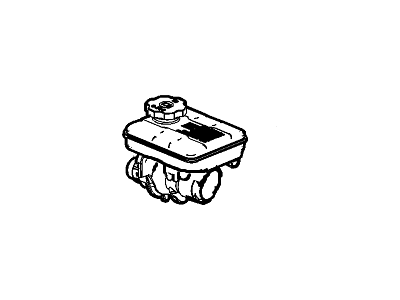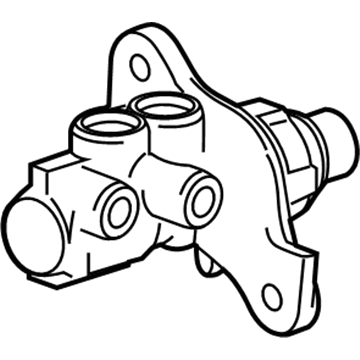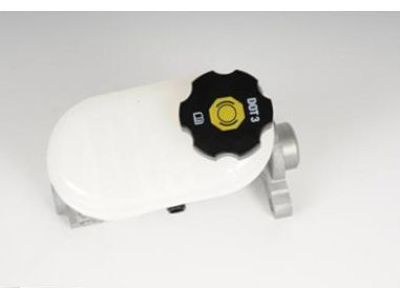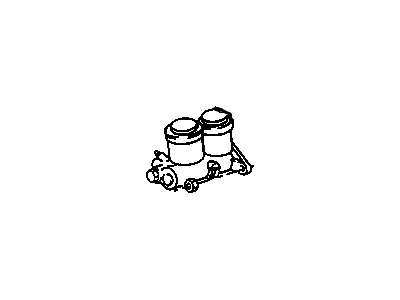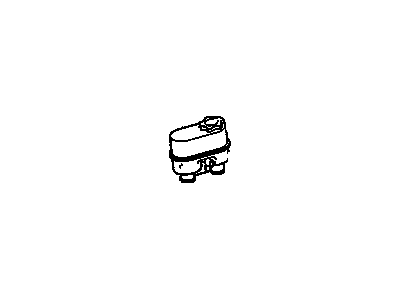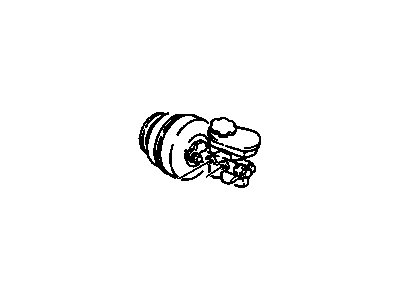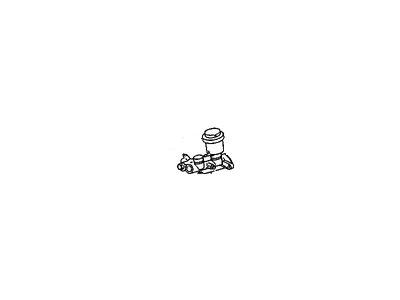
My Garage
My Account
Cart
Genuine Chevrolet Corvette Brake Master Cylinder
- Select Vehicle by Model
- Select Vehicle by VIN
Select Vehicle by Model
orMake
Model
Year
Select Vehicle by VIN
For the most accurate results, select vehicle by your VIN (Vehicle Identification Number).
17 Brake Master Cylinders found
Chevrolet Corvette Cylinder Assembly, Brake Master
Part Number: 23191760$115.61 MSRP: $218.15You Save: $102.54 (47%)Ships in 1-3 Business DaysChevrolet Corvette Cylinder Assembly, Brk Mas
Part Number: 84614770$99.62 MSRP: $187.96You Save: $88.34 (47%)Ships in 1-2 Business DaysChevrolet Corvette CYLINDER ASM,BRK MAS
Part Number: 19418187$214.87 MSRP: $387.16You Save: $172.29 (45%)
Chevrolet Corvette Brake Master Cylinder
This part of Chevrolet Corvette automobile entails the Brake Master Cylinder which plays a significant role in processing the force exerted by a driver's foot as hydraulic force so as to control the brakes. It works through circulation of hydraulic fluid within the system in order to activate the calipers or drums which are required to make the necessary friction to bring the vehicle to a standstill. Since 1967 the Chevrolet Corvette cars have been equipped with Brake Master Cylinders with dual circuit, this is characterized by two pistons such that if a circuit is faulty the other is able to provide the necessary braking force. Chevrolet Corvette Brake Master Cylinders are made from cast iron or aluminum housing with or without cap mounted hydraulic fluid reservoirs. The integral reservoirs have only one cap while the external ones can contain one or two thread caps. This may be because, with time, such systems can develop problems such as fluid leaks, or internal failures that may want to be checked and rectified to allow the premier performance. The Brake Master Cylinder control and architecture is vital to the safe performance of all Chevrolet Corvette automobiles.
Each OEM Chevrolet Corvette Brake Master Cylinder we offer is competitively priced and comes with the assurance of the manufacturer's warranty for the part. Furthermore, we guarantee the speedy delivery of your orders right to your doorstep. Our hassle-free return policy is also in place for your peace of mind.
Chevrolet Corvette Brake Master Cylinder Parts Questions & Experts Answers
- Q: How to remove and install a brake master cylinder on Chevrolet Corvette?A:The Brake Master Cylinder is located at the left rear corner of the engine compartment, mounted to the power Brake Booster. Begin by removing as much fluid as possible from the reservoir using a syringe or an old turkey baster. Place rags under the fluid fittings and prepare caps or plastic bags to cover the ends of the lines once disconnected, taking care to avoid spilling brake fluid, which can damage paint. Disconnect the electrical connector from the brake fluid level switch on the Brake Master Cylinder reservoir. Loosen the fittings at the ends of the Brake Lines where they enter the Brake Master Cylinder, using a flare nut wrench to prevent rounding off the corners. Pull the brake lines slightly away from the Brake Master Cylinder and plug the ends to prevent contamination. Remove the nuts attaching the Brake Master Cylinder to the power booster, then pull the Brake Master Cylinder off the studs and out of the engine compartment, again being cautious not to spill fluid. If installing a new Brake Master Cylinder that does not come with a reservoir, remove the retaining fasteners and reservoir from the old Brake Master Cylinder and transfer it to the new one, replacing the O-rings with new ones. Before installation, bench bleed the new Brake Master Cylinder by mounting it in a vise and attaching a pair of bleeder tubes to the outlet ports, filling the reservoir with the recommended brake fluid. Slowly push the pistons into the Brake Master Cylinder to expel air into the reservoir, repeating the process until no more air bubbles are present. Remove the bleed tubes one at a time, install plugs in the open ports, and then install the reservoir cap. If the old Brake Master Cylinder had a seal, install a new seal into the groove of the Brake Master Cylinder, then position the Brake Master Cylinder over the studs on the power brake booster and tighten the attaching nuts finger-tight. Thread the brake line fittings into the Brake Master Cylinder, adjusting the position slightly if needed to avoid stripping the threads. Tighten the mounting nuts to the specified torque and secure the brake line fittings. Fill the Brake Master Cylinder reservoir with fluid, then bleed the Brake Master Cylinder and the brake system by having an assistant depress the brake pedal and hold it to the floor while loosening the front brake line fitting to allow air and fluid to escape, repeating this on both fittings until the fluid is clear of air bubbles. Have plenty of rags on hand to catch any fluid, as brake fluid can ruin painted surfaces, and rinse the area under the Brake Master Cylinder with clean water after the bleeding procedure. Finally, test the operation of the brake system carefully before placing the vehicle into normal service.
Related Chevrolet Corvette Parts
Browse by Year
2019 Brake Master Cylinder 2018 Brake Master Cylinder 2017 Brake Master Cylinder 2016 Brake Master Cylinder 2015 Brake Master Cylinder 2014 Brake Master Cylinder 2013 Brake Master Cylinder 2012 Brake Master Cylinder 2011 Brake Master Cylinder 2010 Brake Master Cylinder 2009 Brake Master Cylinder 2008 Brake Master Cylinder 2007 Brake Master Cylinder 2006 Brake Master Cylinder 2005 Brake Master Cylinder 2004 Brake Master Cylinder 2003 Brake Master Cylinder 2002 Brake Master Cylinder 2001 Brake Master Cylinder 2000 Brake Master Cylinder 1999 Brake Master Cylinder 1998 Brake Master Cylinder 1997 Brake Master Cylinder 1996 Brake Master Cylinder 1995 Brake Master Cylinder 1994 Brake Master Cylinder 1993 Brake Master Cylinder 1992 Brake Master Cylinder 1991 Brake Master Cylinder 1990 Brake Master Cylinder 1989 Brake Master Cylinder 1988 Brake Master Cylinder 1987 Brake Master Cylinder 1986 Brake Master Cylinder 1985 Brake Master Cylinder 1984 Brake Master Cylinder
